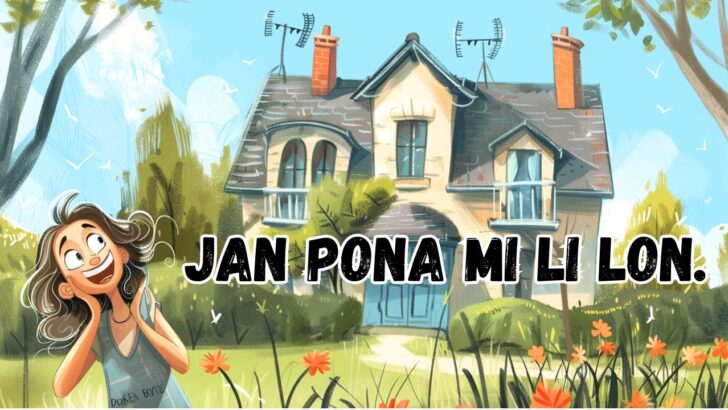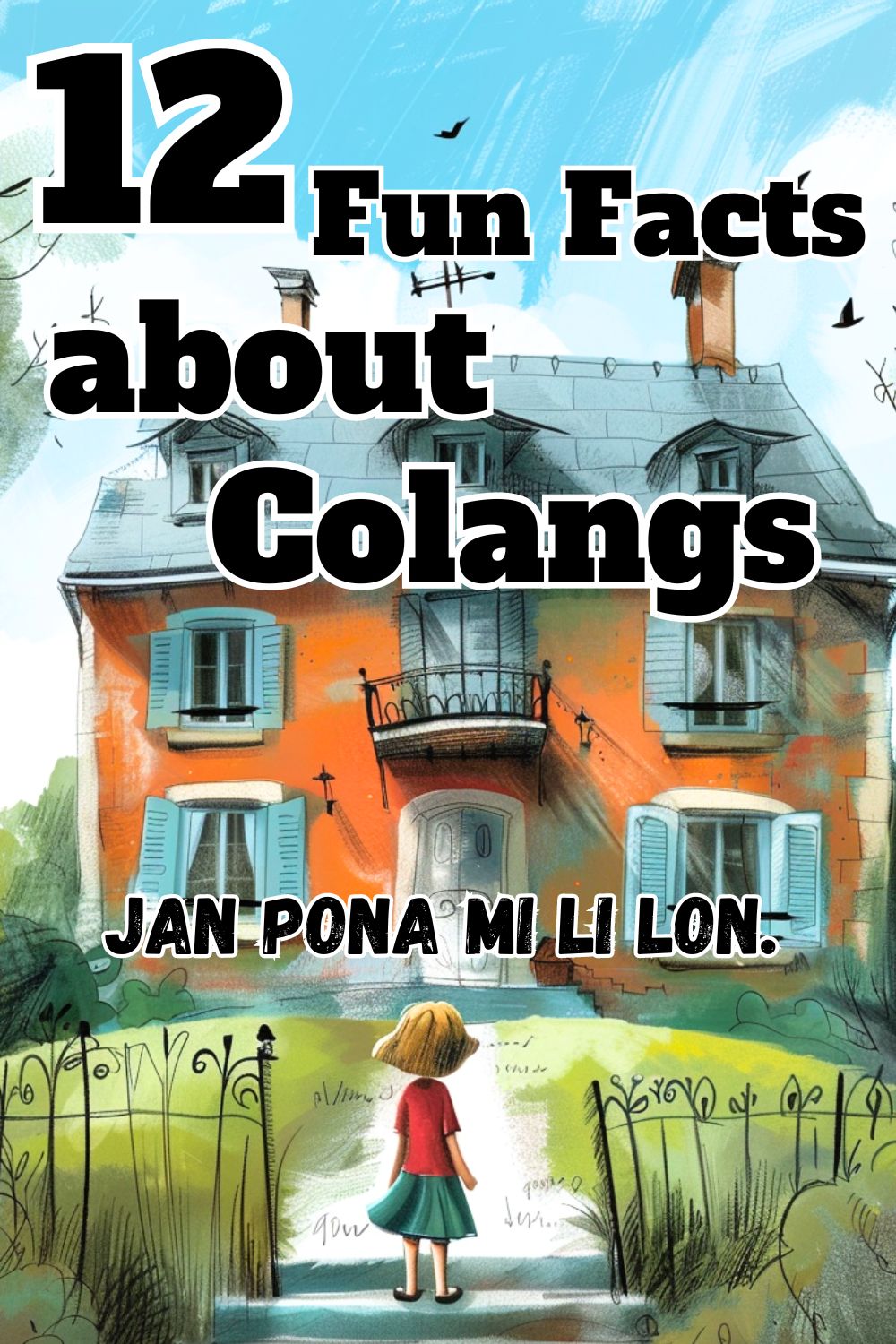Constructed languages, or conlangs, are more than just a fascinating blend of linguistics and creativity—they’re a gateway into new worlds, both real and imaginary. From the iconic Elvish languages of J.R.R. Tolkien’s Middle-earth to the utilitarian Esperanto, conlangs captivate with their ingenuity and cultural impact. Whether designed for literature, film, or international communication, these languages offer unique insights into the art of language creation.
Join us as we explore twelve fun facts that showcase the richness and diversity of conlangs, revealing why these invented languages have enthralled enthusiasts and scholars alike.
But first things first.
What are conlangs?
Constructed languages, or conlangs, are languages that have been deliberately created by individuals or groups rather than having evolved naturally over time. These languages can serve various purposes, such as enhancing the realism of fictional worlds, facilitating international communication, or exploring linguistic theories.
Unlike natural languages, conlangs are often meticulously crafted with specific phonetics, grammar, and vocabulary, reflecting the creator’s vision and goals. This intentional design allows for a unique exploration of linguistic possibilities and cultural expression, making conlangs a fascinating study in both creativity and communication.
1. The Oldest Known Conlang
The oldest recorded constructed language is Lingua Ignota, created by the 12th-century mystic Hildegard of Bingen. Designed for mystical and religious purposes, Lingua Ignota, which translates to “unknown language,” featured a unique vocabulary and script. Hildegard used it as a secret code, adding an air of mystery and divine connection to her spiritual writings. This early conlang showcases the long history and diverse motivations behind language creation, highlighting how conlangs can serve both practical and esoteric functions.
2. Esperanto: The Most Successful Conlang
Esperanto, created by Polish ophthalmologist L. L. Zamenhof in 1887, is widely regarded as the most successfully constructed language intended for international communication. Zamenhof designed Esperanto to be an easy-to-learn, politically neutral language that could foster peace and understanding between people from different countries. Today, Esperanto boasts a vibrant community of speakers, estimated to be in the hundreds of thousands to millions, and a rich body of literature, including original works and translations. Its success and longevity demonstrate the potential for conlangs to bridge cultural divides and create global connections.
3. Tolkien’s Elvish Languages
J.R.R. Tolkien, the author of “The Lord of the Rings” and “The Hobbit,” was not only a master storyteller but also a skilled philologist. He created several detailed conlangs for his fictional world of Middle-earth, including Quenya and Sindarin, the languages of the Elves. Tolkien’s deep understanding of historical linguistics and his passion for language greatly influenced these creations, giving them rich histories and complex grammar. His Elvish languages are so well-developed that they can be learned and spoken, adding a layer of authenticity and depth to his legendary fantasy world.
4. Klingon: The Warrior’s Tongue
Klingon, created by linguist Marc Okrand for the “Star Trek” series, is one of the most well-known conlangs. Designed to reflect the warrior culture of the Klingon species, the language features guttural sounds and a unique, complex grammar. Klingon has gained a dedicated following, with enthusiasts learning and speaking it at conventions, in online communities, and even in translated works of literature, such as “Hamlet” and “The Epic of Gilgamesh.” Klingon’s popularity highlights conlangs’ impact in fostering fan communities and cultural engagement.
5. Dothraki and High Valyrian: Languages of “Game of Thrones”
David J. Peterson, a linguist and language creator, developed Dothraki and High Valyrian for the HBO series “Game of Thrones.” These languages were designed to add depth and realism to the show’s diverse cultures. Dothraki, the language of the nomadic horse-riding warriors, features guttural and harsh sounds, reflecting their rugged lifestyle. High Valyrian, the language of ancient nobility, has a more elegant and complex structure. Peterson’s work on these conlangs has inspired fans to learn and use them, demonstrating the power of well-crafted languages in enhancing storytelling and engaging audiences.
6. Toki Pona: The Minimalist Language
Toki Pona, created by linguist and translator Sonja Lang, is a minimalist conlang with only 120-137 root words. Designed to simplify thoughts and encourage positive thinking, Toki Pona’s vocabulary focuses on basic, universal concepts. The language’s simplicity and flexibility make it an intriguing experiment in how minimalism can influence communication and thought processes. Despite its small lexicon, Toki Pona has developed a dedicated community of speakers and is used in various contexts, from meditation and mindfulness practices to creative expression.
7. Loglan and Lojban: Languages of Logic
Loglan, created by James Cooke Brown in the 1950s, and its descendant Lojban are constructed languages designed to test the Sapir-Whorf hypothesis, which suggests that language influences thought. These languages feature a grammar based on formal logic, aiming to reduce ambiguity and promote clear, precise communication. Loglan and Lojban have attracted a community of enthusiasts interested in linguistic experimentation and cognitive science. Their development and use highlight how conlangs can serve as tools for scientific inquiry and philosophical exploration.
8. The Conlanging Community
The world of conlangs extends beyond individual creations to a vibrant and supportive community of enthusiasts. Online forums, social media groups, and dedicated websites such as the Language Creation Society provide platforms for conlangers to share their work, exchange ideas, and collaborate on projects. These communities offer resources, from language construction tutorials to linguistic theory discussions, fostering a culture of creativity and mutual support. The global network of conlangers illustrates how the art of language creation can bring people together, bridging gaps between cultures and interests.
9. Conlangs in Film and Television
Conlangs play a crucial role in the entertainment industry, enhancing the authenticity of fictional worlds in film and television. Languages like Na’vi from James Cameron’s “Avatar” and the various languages created for the “Star Wars” universe immerse audiences in these alternate realities. Linguists and conlang creators are often hired to develop these languages, ensuring they are believable and learnable by actors and, in many cases, fans. The presence of conlangs in popular media underscores their importance in storytelling and world-building, captivating viewers with their depth and detail.
10. Conlangs and Education
Conlangs are increasingly used as educational tools to teach linguistic concepts and inspire creativity. Teachers use them to demonstrate how languages work, covering topics such as phonetics, grammar, and syntax engagingly. Creating a conlang can also be a classroom project that encourages students to apply their knowledge of language structures while exercising their creativity. This hands-on approach to learning about languages helps students understand the diversity and complexity of human communication, making linguistics more accessible and enjoyable.
11. Conlangs in Literature
Conlangs often appear in literature to add depth and authenticity to fictional worlds. Notable examples include George Orwell’s Newspeak in “1984,” a language designed to limit freedom of thought, and Anthony Burgess’s Nadsat in “A Clockwork Orange,” a blend of English and Russian slang. These languages enrich the narrative and serve as tools for social commentary, reflecting the themes and messages of the stories. The use of conlangs in literature demonstrates how invented languages can enhance storytelling, providing readers with a deeper immersion into the author’s vision.
12. Conlangs and Cultural Identity
Conlangs can play a significant role in expressing and preserving cultural identity. For instance, some indigenous communities create or revitalize languages to reconnect with their heritage and strengthen community bonds. These efforts can be seen in initiatives like the Hawaiian language revitalization movement, which, while not a conlang, involves conscious reconstruction and promotion of a nearly extinct language. Similarly, fictional conlangs often reflect the cultures and histories of their creators, providing a unique lens through which to explore and celebrate cultural diversity. This aspect of conlangs highlights their power as linguistic tools and symbols of cultural pride and identity.
Creating Your Own Conlang
Creating your own conlang can be a gratifying and creative endeavor. The process involves designing a new language’s phonetics, grammar, and vocabulary, which can be as simple or as complex as you desire. Many conlangers draw inspiration from existing natural languages, combining elements in novel ways, while others invent entirely new linguistic structures.
Getting Started
- Phonetics: Decide on the sounds your language will use. This involves selecting consonants and vowels and determining how they can be combined.
- Grammar: Establish the rules for sentence structure, verb conjugation, noun declension, and other grammatical elements. This is where you define how your language will handle subjects, objects, tenses, and other linguistic features.
- Vocabulary: Create words for common concepts and expand from there. Think about how words relate to each other and how new words can be formed through compounding or affixation.
Resources and Communities
There are numerous resources available to help you on your conlanging journey. Books like Mark Rosenfelder’s “The Language Construction Kit” provide comprehensive guides to the process. Online communities, such as the Language Creation Society, offer forums and social media groups where you can share your progress, get feedback, and collaborate with other conlangers.
Applications and Enjoyment
Conlanging can be purely for personal enjoyment, an artistic project, or even an academic exercise. It allows you to explore linguistic theory hands-on and can enhance your appreciation of natural languages. Whether creating a language for a fictional world, experimenting with linguistic concepts, or simply enjoying the creative process, conlanging offers a unique and fulfilling hobby.

Hey fellow Linguaholics! It’s me, Marcel. I am the proud owner of linguaholic.com. Languages have always been my passion and I have studied Linguistics, Computational Linguistics and Sinology at the University of Zurich. It is my utmost pleasure to share with all of you guys what I know about languages and linguistics in general.


